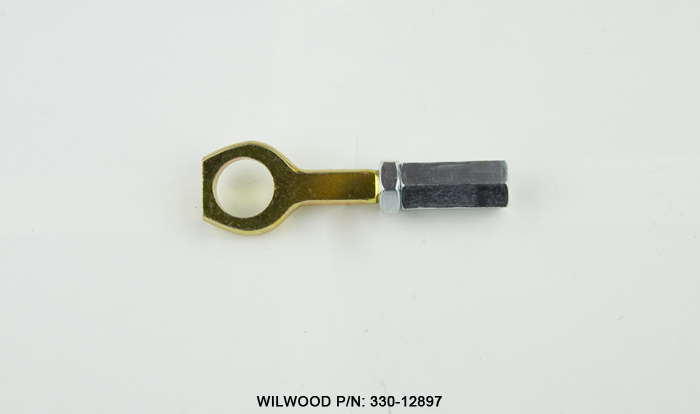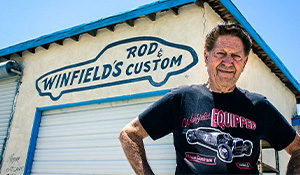Ferrari 250 GTO sets new marque auction record
The record price for a Ferrari sold at auction has been reset, following a special auction event in New York this November, conducted by RM Sotheby’s.

As part of their Marquee Week Sales of Modern and Contemporary Art, RM Sotheby’s offered a restored 1962 Ferrari 250 GTO. Already regarded as the Holy Grail amongst collectable Ferraris, this 250 GTO had been with the consignor for 38 years, but what set it apart from the handful of others built to ‘Tipo 1962’ specification was its unique early history.

GTO origins
Ferrari developed the 250 GTO from their existing 250 GT SWB in response to the FIA’s intention to replace the World Championship of Sports Cars with a new International Championship of Manufacturers for 1962. This would see points awarded only to GT production car classes, not prototype racecars, although they could still enter. As the 250 GT was already homologated, it was the obvious choice for Ferrari to develop for the new competition.

To the 250 GT SWB, which had a lineage going back to the early 1950s, the 250 GTO (Gran Turismo Omologata) added improvements in several areas. The chassis was revised, with smaller and lighter tubing, the rear suspension improved, a Watts linkage added and an all-new five-speed gearbox fitted in place of the previous four-speed.
The engine, a small-block V12, remained at 3.0-litre capacity to suit GT racing regulations, but incorporated six carburettors instead of three, with other minor changes making it broadly similar to what had been fitted to the 250 Testa Rossa of 1957. Output peaked at 302bhp (225kW), compared to 280bhp (208kW) for the triple-carb 250 GT SWB.

The bigger change in creating the 250 GTO was made to the bodywork, with the engineering team led by Giotto Bizzarrini replacing the 250 GT SWB’s bluff front end with a swooping aerodynamic nose that featured three distinctive half-moon air intakes to feed the carburettors. The reconfigured chassis allowed a lower bonnet line, a spoiler was integrated into the docked tail and air extraction vents were either added to or enlarged. Testing at Monza (by Stirling Moss), Modena and in the University of Pisa’s wind tunnel refined the 250 GTO’s body, which was finalised in time for the new model to be unveiled in February, 1962.

Longer and lower than the 250 GT SWB, the 250 GTO was also lighter - by as much as 200kg depending on body construction. More importantly, the combination of improvements made the GTO faster (top speed of around 280km/h) and improved the handling.

Race Ready
A month after its unveiling, the 250 GTO was racing, making its competition debut at the 12 Hours of Sebring, where it finished first in class and second overall. More success followed at events like the Targa Florio, Spa and Nurburgring endurance races, Tour de France, TT and more. But as Ferrari were focussed on sports car and prototype racing, they tended to leave GT racing to privateers - the new International Championship of Manufacturers meant the manufacturer would be rewarded, regardless of whether the entry was their own or not.
To that end, the Sebring result was achieved by Ferrari’s North American distributor and most of the following successes in circuit, endurance and hillclimb events came at the hands of individuals or distributor entries, too. With this in mind, it makes the early history of the 250 GTO auctioned all the more interesting.

While the FIA tried to implement the new GT rules for the 24 Hours of Le Mans, the organisers of that event were adamant that prototypes continue to race, so they added a 4.0-litre class. Ferrari responded by adding one of their existing 4.0-litre V12 engines to a 250 GTO. The car auctioned, chassis #3765, was the first example to be fitted with such an engine. Two other GTOs would receive a 4.0-litre V12, but #3765 was the only one to have the larger engine from new.
The ninth GTO built (by date) and the 14th of 34 (some sources say 33) to received Tipo 1962 bodywork, chassis #3765 had to have its bonnet modified to take the larger engine, which incorporated dry sump lubrication, special carburettors and different camshafts.

Interestingly, #3765 ran a three-carb set-up when the Scuderia Ferrari entered it in the 1962 Nurburgring 1000km, where works drivers Mike Parkes and Willy Mairesse achieved a class win and second overall. A fresh 4.0-litre engine, this time with six carbs, was fitted for the 1962 24 Hours of Le Mans, where #3765 was one of four Ferrari factory entries and 13 overall, including four 250 GTOs from privateers.
Parkes, this time partnered with Lorenzo Bandini, qualified the 4.0 GTO in fourth but overshoot a corner and buried himself in a sand bank on the opening lap. He eventually restarted, but the car later overheated, retiring after six hours. This ended #3765’s time as a factory car, but not as a racer.

Owner History
The first private owner of 250 GTO #3765 was a resident of north-eastern Italy who purchased the car from the factory in November, 1962 and had Maranello convert it to 3.0-litre spec six months later (officially, the 4.0-litre units were regarded as 330 LM/250 GTO). That engine remains in the car to this day.
Tested by no less that John Surtees ahead of delivery, the reconfigured 250 GTO was sold in late 1964, with the second private owner, a native of Sicily, campaigning it extensively before trading it back to Maranello. Chassis #3765 then went to the USA, where it’s remained ever since.

The first American owner, based in California, had Ferrari repaint the car yellow ahead of delivery, but only held on to it for a year. The next owner kept it for six years, presenting it at many Ferrari Club of America (FCA) events during that time. In August, 1974, #3765 was purchased by the President of the FCA, who also happened to be a senior engineer with American Motors Corporation. The Ferrari’s next and most recent owner purchased it in 1985.

After a full restoration in the US (including a return to its original Rosso Cina paint), chassis #3765 was displayed extensively through the ’90s. ’00s and ’10s, at FCA and broader concours events. Highlights include a runner-up result in the special GTO class at the 2011 Pebble Beach Concours d’Elegance (against 23 other 250 GTOs) and an outright Best in Show at the 2012 Amelia Island Concours d’Elegance, beating out 12 other similar cars.

To Auction
Being a 250 GTO, one of 39 built and the only example originally equipped with a 4.0-litre engine, this car was guaranteed to attract attention from collectors when it went to auction with RM Sotheby’s at their special New York event on 13 November.
Limited to a select group of in-person and phone bidders, the auction ultimately saw chassis #3765 sell for US$51.7 million (AU$81.1 million approx.) – comfortably topping the old mark of AU$67 million for a 250 GTO and setting a new record for a Ferrari sold at auction. The result also makes this 250 GTO the second most expensive car ever sold at auction, only bettered by the Mercedes-Benz 300 SLR ‘Uhlenhaut Coupe’ that sold for 135 million Euros (US$142 million, AU$202M approx.) through RM Sotheby’s last year.

"Celebrating this sale during Sotheby’s marquee week highlights the unparalleled stature of this Ferrari as one of the world’s most desirable objects,” said Gord Duff, Global Head of Auctions, RM Sotheby’s.
“Fetching $51.7 million, this transaction adds a new chapter to a vehicle with an unmatched legacy. Now, it ranks among the most expensive cars sold at auction, a true testament to its singular place in history."
For more details, go to: rmsothebys.com













